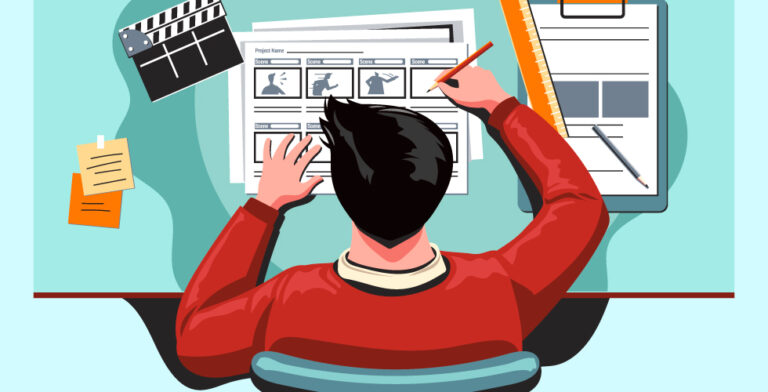Animation brings imagination to life through visual storytelling. It makes scenes and characters come alive in vibrant, captivating ways.
The artists behind these animated worlds use their creative talents and skills to make animation that we love.
So what does an animation artist do every day? What kinds of tools and skills do they use in their work? And what career opportunities exist for those interested in animation?
Where Do Animators Work?
Most animators usually work from home or are self-employed. They might also work in animation design studios.
Studio job is more focused on the motion picture and video industries. Some animators also work in business offices, advertising agencies, or even publishing companies.
Now that we know about where animators work let us first understand how the world of animation has evolved till today and if there’s a chance of further evolution.
Your Message
With Animation

Transform Your Message With Animation





Evolution of Animation
Animation has undergone a remarkable evolution since its early days. The roots of animation can be traced back to the pioneering work of Walt Disney and his groundbreaking creations like “Steamboat Willie” (1928), featuring the iconic Mickey Mouse.
These early Disney films laid the foundation for animation as a medium for storytelling and entertainment.
Over the decades, animation expanded its horizons, embracing diverse techniques and styles. The introduction of Technicolor in the 1930s brought vibrant colors to animated films, enhancing their visual appeal.
Disney continued to innovate with classics like “Snow White and the Seven Dwarfs” (1937) and “Fantasia” (1940), setting high standards for character development and storytelling.
The advent of television in the mid-20th century introduced animation to a broader audience. Cartoons became a staple of Saturday morning programming, with beloved series like “The Flintstones,” “Scooby-Doo,” and “Looney Tunes,” captivating viewers of all ages.
The late 20th century witnessed a technological revolution in animation with the emergence of computer-generated imagery (CGI). Pixar Animation Studios revolutionized the industry with the release of “Toy Story” (1995), the first-ever feature-length CGI film. This marked a turning point, showcasing the limitless possibilities of computer animation.
Animation expanded beyond the confines of film and television, venturing into video games and mobile applications. Video game graphics evolved rapidly, employing advanced animation techniques to create immersive, interactive experiences.
Mobile apps incorporated animation for entertainment, education, and user engagement, tapping into the convenience of handheld devices.
Today, animation thrives in diverse forms, from traditional 2D animation to cutting-edge 3D and CGI techniques. Now, streaming platforms offer a wealth of animated content, catering to audiences of all ages and tastes.
Now, the world of animation continues to push boundaries, seamlessly blending artistry and technology to create mesmerizing visual experiences across various mediums. Its evolution from the early Disney era to the dynamic landscape of today reflects its enduring appeal and adaptability in capturing the imagination of audiences worldwide.
Typical Day-to-Day Responsibilities
The daily work of an animation artist varies based on their specific role and the phase of a project. However, some common responsibilities include:
- Conceptualizing Storyboards: Animation artists map out key plot points, characters, scenes, and sequences on storyboards. This involves determining shot composition, perspective, and flow to translate the creative vision to the screen.
- Character Illustration: Bringing iconic characters to life starts with concept art and rough sketches that capture personality and detail. Animation artists define traits like proportion, attire, facial expressions, and body language.
- Background, Prop, and Scene Illustration: The worlds, objects, and backdrops that populate animated films and shows also begin as drawings and concept art worked on by animation artists. The style varies greatly based on the fictional universe.
- Pre-visualization: Early animated sketches, diagrams and layouts give the creative team a feel for how a shot or sequence will look before full production begins. This direction is led by animation artists.
- Key Frame Illustration: Keyframes depict important poses at critical moments between which interim poses are filled in. The animation artist’s illustrations shape pacing and continuity.
- Style Consultation: Animation artists also frequently collaborate with directors and producers to define aesthetics regarding medium, era, mood, lighting, and more. Their artistic perspective informs these choices.


Critical Tools and Skills
Executing the responsibilities outlined above requires diverse expertise:
- Drawing and Fine Arts Skills: From portraiture for character design to landscape illustration for backgrounds, excellence in traditional drawing and painting is essential. An innate grasp of form, composition, and color theory informs an animation artist’s work.
- 2D Animation Software Proficiency: Programs like Toon Boom Harmony, Adobe After Effects, and TVPaint are standards for 2D animation, compositing, and effects. Others like Autodesk Maya and Blender enable 3D animation.
- Creativity and Imagination: Animation artists ideate fresh, engaging settings, characters, and stories. Brainstorming possible themes, personalities, shapes, and more comes with the territory.
- Visual Communication: Translating complex narratives and emotions into an illustrated, visually dynamic form requires strong visual communication ability. The same goes for collaborating with other departments.
- Openness to Feedback: Production necessities or executive decisions may require reworking designs or ideas. Listening to and incorporating constructive input is par for the course.
Opportunities and Possible Jobs in Animation
Animation artists’ career paths can vary from focused specialization to leadership of entire projects. Potential progressions include:
- Storyboard Artist: Early career animation artists often start here, planning sequences that others execute down the line.
- Background and Layout Artist: Ensuring visual continuity across scenes by illustrating environments, motion graphics, and directing spatial composition.


- 3D Modeler: Creating character, prop, and scene assets in modeling software that can be animated digitally. It’s more technical than some roles.
- Visual Development Artist: Defining production aesthetics through color scripts, style guides, and illustrated examples. Influences overall look and mood.
- Character Designer: Specializing particularly in conceptualizing and refining memorable, compelling principal characters and their attributes.
- Lead Animator or Art Director: Managing teams tackling complex animation sequences or overseeing all visual creative decisions.
Advancement comes with demonstrated artistic excellence and responsibility. Expanding markets like advertising, software, and video games offer plentiful openings too.
In fact, the Bureau of Labor Statistics projects above average 8% job growth in digital animation roles over the coming decade thanks to interactive media demand. Salaries range on average from $55,000 to $95,000 based on experience and management status.
In summarizing the role, Walt Disney himself perhaps said it best decades ago: “Animation can explain whatever the mind of man can conceive.” It’s a dream job for creative professionals eager to build the next animated classic.
Your Message
With Animation





Transform Your Message With Animation





Conclusion
Animation artists are the architects of imagination, crafting captivating worlds and endearing characters that transcend the boundaries of reality.
Their blend of artistic flair, technical expertise, and boundless creativity fuels the magic that enchants audiences of all generations.
Behind every frame lies their dedication, passion, and commitment to the art of animation, making their contribution indispensable in shaping the landscape of visual storytelling.






